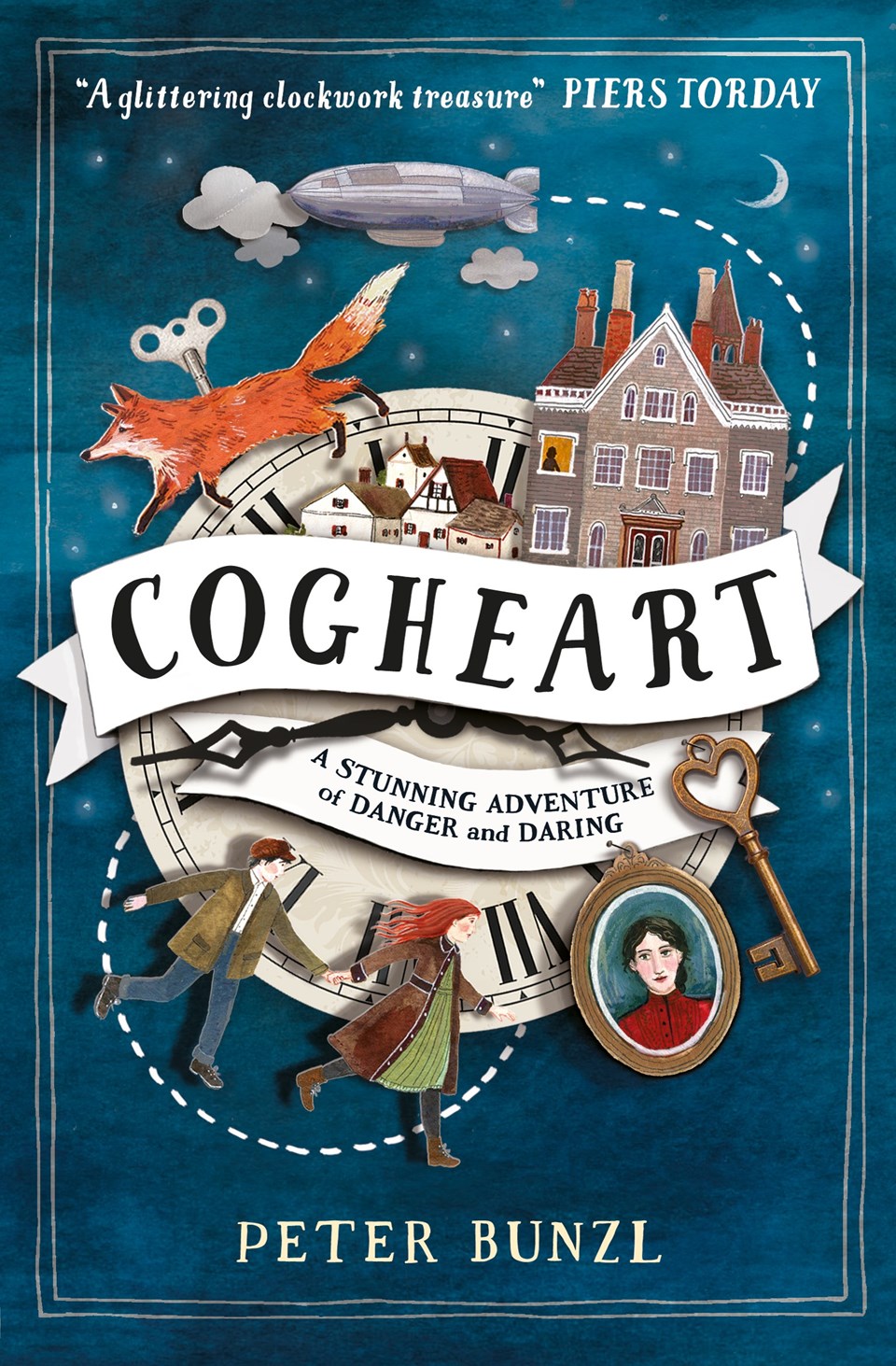I have a confession to make. My children’s book Cogheart contains a talking animal: a fox named Malkin.

Some readers aren’t keen on talking animals in children’s books, and some agents have told me they downright dislike them. But I love a good talking animal in a children’s story, and with Malkin I wanted to create a character who had an opinion and something to say. The trouble was, with no practical magic in my story, I had to think of a way to make him speak.
Cogheart is set in a steampunk-y Victorian world where clever inventors and clockmakers have created thinking, feeling, talking automatons - mechanical people, who live alongside humans and help them, but who need to be wound up every day to stay conscious. So why not have mechanical pets too?
Malkin is the mechanimal pet of my main character Lily, created for her by her father John Hartman. He’s a cantankerous know-it-all with real fox-y instincts, but he’s also the possessor of an oversize human ego much larger than his tiny frame.
Foxes, for me, are the embodiment of wild creativity. When one slinks past you on a shady street, or darts from the tangled thicket of your imagination, it’s as if a bright-red streak of magic is ushering you towards a wild story. Cats can be the same, and other creatures too. Each one a long tailed guide through tall tales, for the author as much as the characters who meet them.
It was that way with Cogheart. One of the first sequences I wrote was an early scene, where Malkin is running through the woods, trying to escape a gang of men. When I put down the opening lines of that scene, I didn't know who the character was, where he was going, or why he was being chased. After I’d written a page I stopped and wondered what kind of animal might find himself in the situation. Immediately, I knew he was a fox: a scruffy opinionated fellow, with his own thoughts and ideas about everything, and that fed into his voice as he complained about the indignity of being chased through the woods like a common scavenger.
I suppose it sounds rather a strange backstory, but, like many great characters, Malkin just appeared, and the fact he was a fox made him doubly interesting.

There’s so much scope for animals in children’s stories - they can be nurturers, wise men, tricksters, clowns. Or, when they don’t speak, they can be the embodiment of the protagonist’s wild-self - like the wolves in The Wolf Wilder, or Gryff in The Dreamsnatcher. Animals can be heroes in their own stories, like Fiver and Hazel in Watership Down, Mr Fox in Fantastic Mr Fox, or Varjack in Varjack Paw - a spoiled cat who finds himself alone in the city and must learn cat kung-fu to survive!
Sometimes animals are personality mirrors for the main character, or they can be a Jiminy-Cricket-like conscience – a kind of pocket-sized parent. Other times they’re simply someone your hero can confide in and explain things to. Or they’re shape-shifters who encompass a multiplicity of these traits – literally in the case of Pantalaimon in His Dark Materials!
Often talking animals have egos larger than their physical frame, and this can create a great personality, full of comic opportunity. Two examples that spring to mind are: the General in The Last Wild, a shout-y cockroach who thinks he’s the commander of a troop of wild animals all much bigger than he is, or Moggett in Sabriel, a powerful trickster-spirit magicked into the body of a tiny cat, like a a particularly furry, bad-tempered genie yearning to be free.
Animals can also be guides to the hero, helping them navigate unknown territories. Like the Cat in Coraline, the Cheshire Cat in Alice in Wonderland, or Aslan in Narnia. When an animal accompanies a hero on a journey it’s important you make them special in some way, but not so special they outshine the lead – who’s adventure this is after all!
It seems animal stories have been with us a long time, engrained in legends, fairytales and stories. From Romulus and Remus – raised by wolves, to The Little Goose Girl, to The Jungle Book, and, more recently to Disney where every kind of animal, talkative or not, inhabit their films.
Animals have been part of our history since the first dog was domesticated and sat by our fireside, and hopefully they’ll be included in our stories for a long while to come. I know Malkin, at least, will be appearing in the next few tales I write!
Peter Bunzl is the author of Cogheart, and a sequel, Moonlocket, was published in Spring 2017. Discover more about the book on Peter's website or follow him on Twitter.
Comments